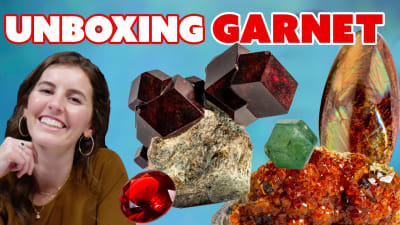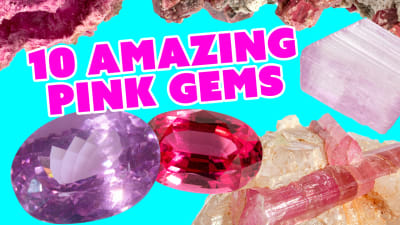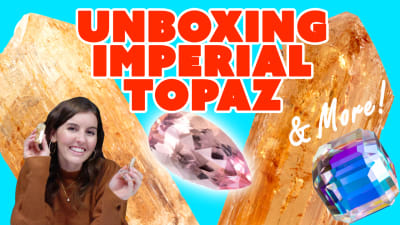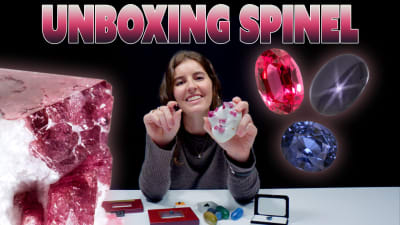All About Rhodonite | Unboxing Its Many Crystal Forms
All About Rhodonite | Unboxing Its Many Crystal Forms
Our hosts unbox rhodonite in this episode of gemstone unboxing. Rhodonite is a mineral that normally forms from contact metasomatism in a metamorphic rock called skarn. This formation is caused by hydrothermal fluids penetrating the rocks and collecting silicon, oxygen and manganese aluminum, ingredients necessary to make rhodonite. Additionally, when manganese is exposed to oxygen or oxidized it gives rhodonite its black and rosy-pink color as well. Rhodonite is usually found in massive forms and is translucent to opaque in appearance, and it can be pretty large. These qualities make rhodonite great for ornamental material since its moh’s scale of hardness rating is fairly soft at five and a half to six.
Rhodonite and its samples are shown in this episode to demonstrate this gem’s diverse qualities, like how they normally have geometric forms like dodecahedrons and can range from dull to vitreous luster. It can also be pearly in some of the cleavage fractures found within Rhodonite. Additionally, rhodonite was first discovered in the late 1700s in the Ural mountains in western Russia. The local natives reportedly saw eagles picking up red stones and placing them into their nests, and so the locals started placing rhodonite in their babies' cribs. This tradition continues in Russia today through rhodonite easter eggs, and rhodonite pottery and artifacts can be found in Russian museums for their historical importance as well.
See our rhodonite samples and learn more about this mineral’s interesting shapes, history, imposters and other trivia from our gemstone video.



